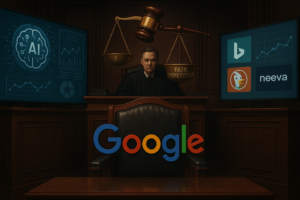Navigating the Intersection of Artificial Intelligence and the Legal System: A Call for Innovation and Regulation
The rapid advancement of artificial intelligence presents both opportunities and challenges for the legal system. Senior Associate Justice Marvic Leonen emphasizes the necessity for the Philippine judiciary to embrace AI technology while ensuring robust safeguards are in place. This article explores Leonen’s insights on advancing legal frameworks, the importance of cybersecurity, and the need for collaboration between tech experts and legal professionals to navigate this transformative landscape.
As artificial intelligence (AI) continues to reshape industries worldwide, the legal system finds itself at a critical juncture. Senior Associate Justice Marvic Leonen of the Philippine Supreme Court recently highlighted the pressing need for the judiciary to adapt to these technological advancements while upholding the rights of citizens. During his keynote address at the Manila Tech Summit 2024, Leonen articulated a vision for a legal framework that not only embraces AI but also ensures robust protections against its potential pitfalls.
Leonen acknowledged the inherent risks associated with AI, from data privacy concerns to the possibility of misuse. Yet, he firmly believes that the path forward lies in actively engaging with these new technologies rather than retreating from them. “The legal profession has not fully grasped the possibilities of artificial intelligence available to it,” he noted, stressing the importance of evolving legal practices to keep pace with innovation.
One of the most significant challenges that Leonen pointed out is the regulatory landscape surrounding cybersecurity. With the increasing digitalization of courts, the judiciary is now more vulnerable to cyberattacks than ever before. Leonen reported that courts could face thousands of hacking attempts daily, underscoring the need for stringent cybersecurity measures. While existing laws like the Data Privacy Act and Cybercrime Prevention Act provide a foundation, they are insufficient to address the fast-evolving nature of AI technologies.
To effectively navigate the complexities of AI in the legal realm, Leonen advocates for collaboration between IT professionals and legal experts. “A transformation of our judicial system geared towards AI advancement means working together with IT professionals who know what we are up against,” he stated. This collaboration is essential for developing comprehensive rules that govern AI usage, ensuring that the technology serves the interests of justice rather than undermining it.
The Supreme Court’s Strategic Plan for Judicial Innovations 2022-2027 aims to digitalize court processes, introducing key reforms such as:
- Videoconference hearings
- Mandatory electronic filing of pleadings
These initiatives not only enhance efficiency but also pave the way for integrating AI tools that can assist in legal research and case management.
However, Leonen cautions that the integration of AI tools must be approached responsibly. “The key idea to keep in mind is the responsible use of AI and other recent innovations,” he stressed. This means continuously revising legal frameworks as AI technology evolves, ensuring that safeguards against violations of rights remain effective.
In conclusion, the integration of AI into the legal system presents an opportunity for significant advancements in efficiency and access to justice. Still, it requires a careful and deliberate approach to regulation and ethics. By staying abreast of technological developments and collaborating with experts in the field, the judiciary can harness the benefits of AI while safeguarding the rights of individuals, ultimately creating a more just and equitable legal system for all.


